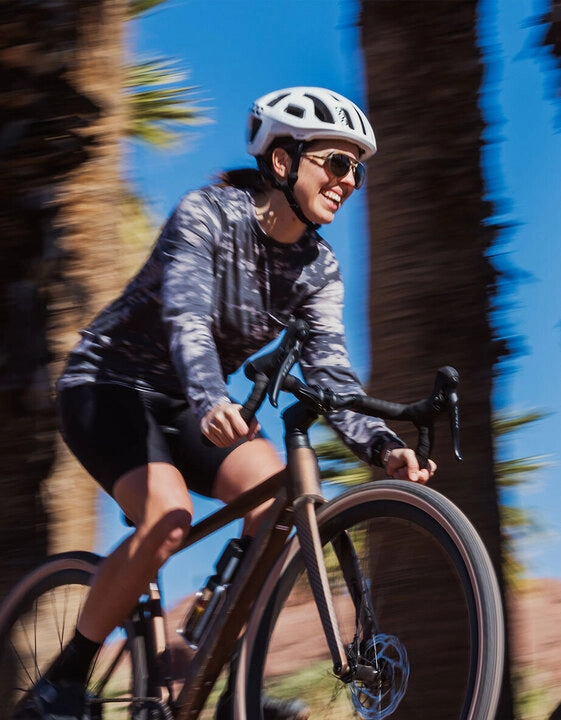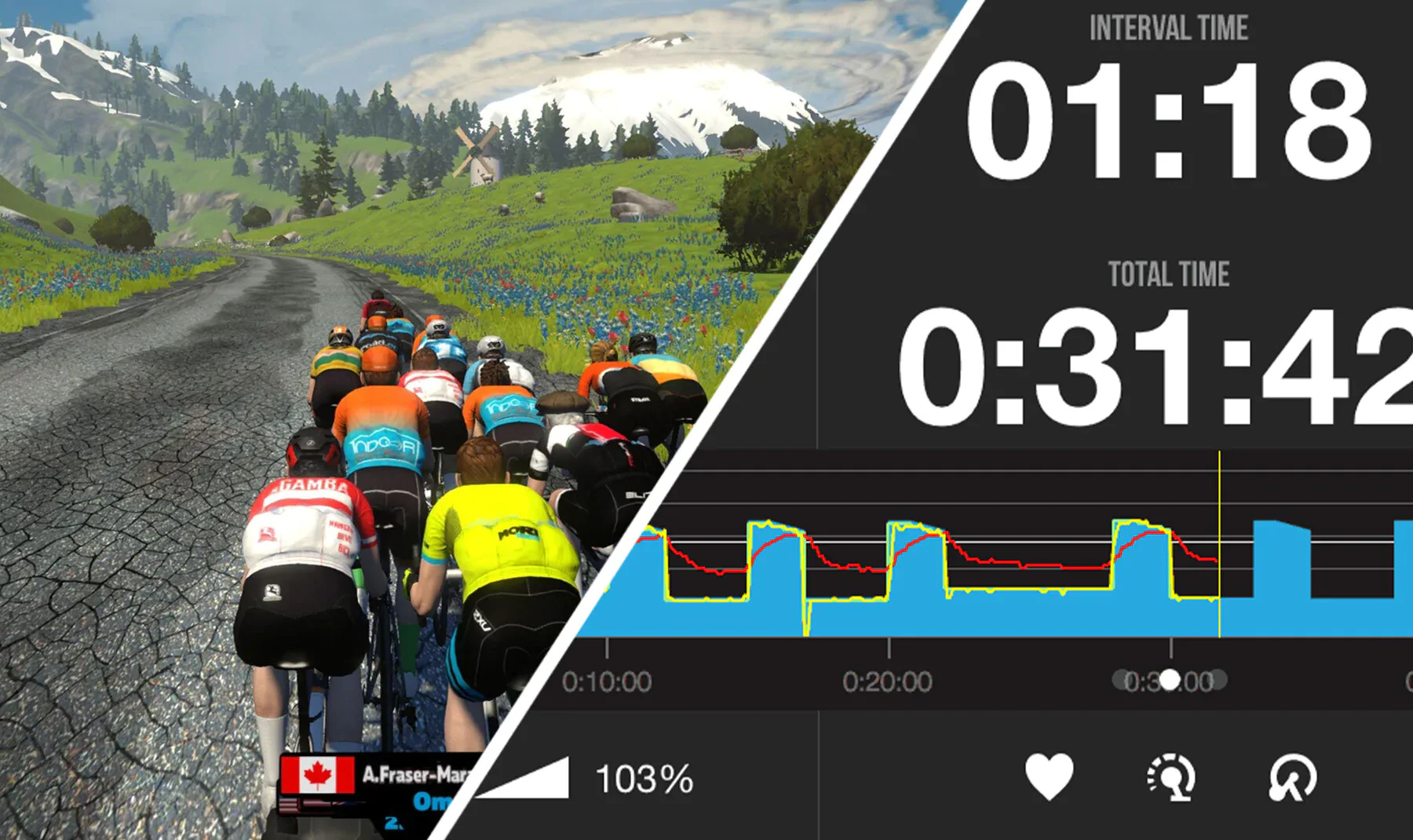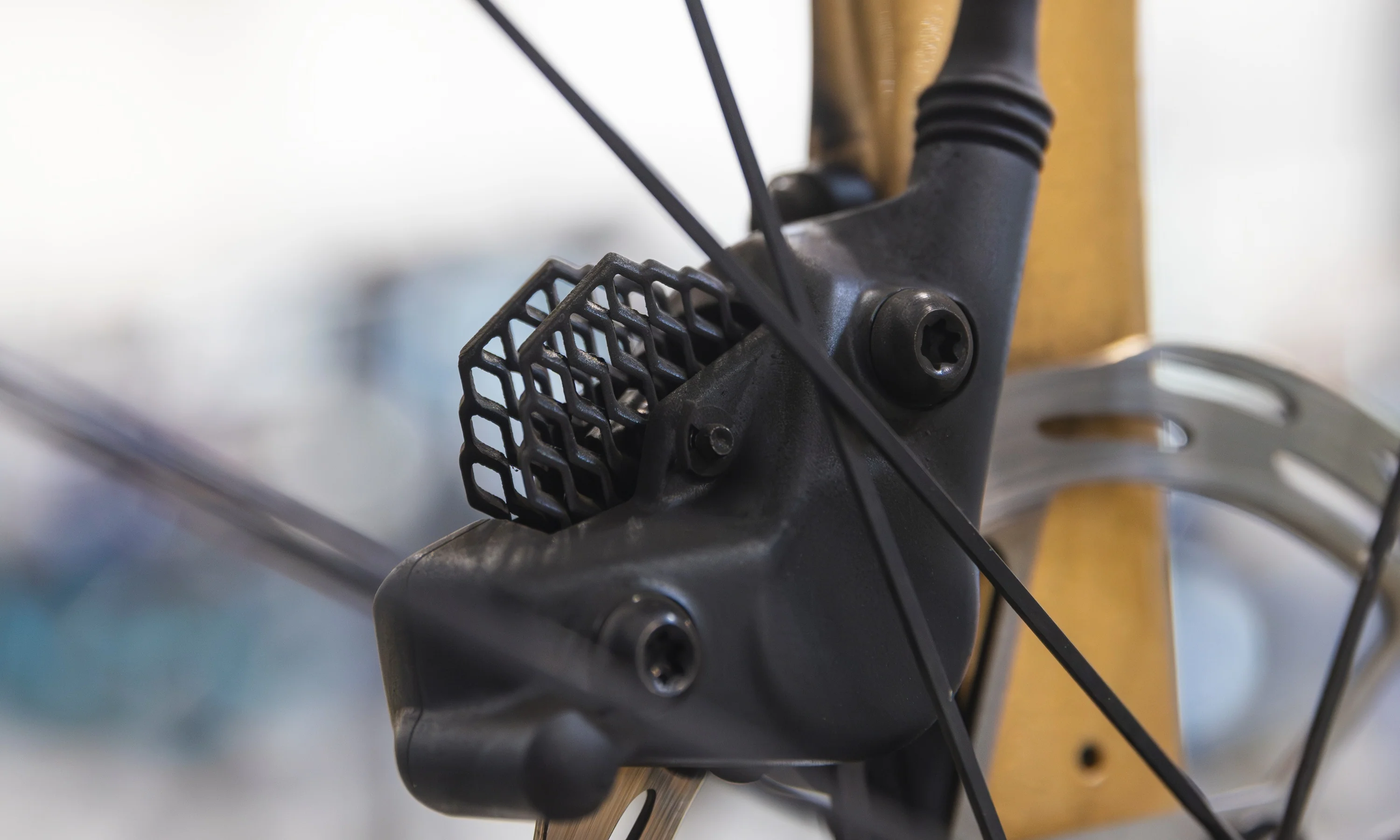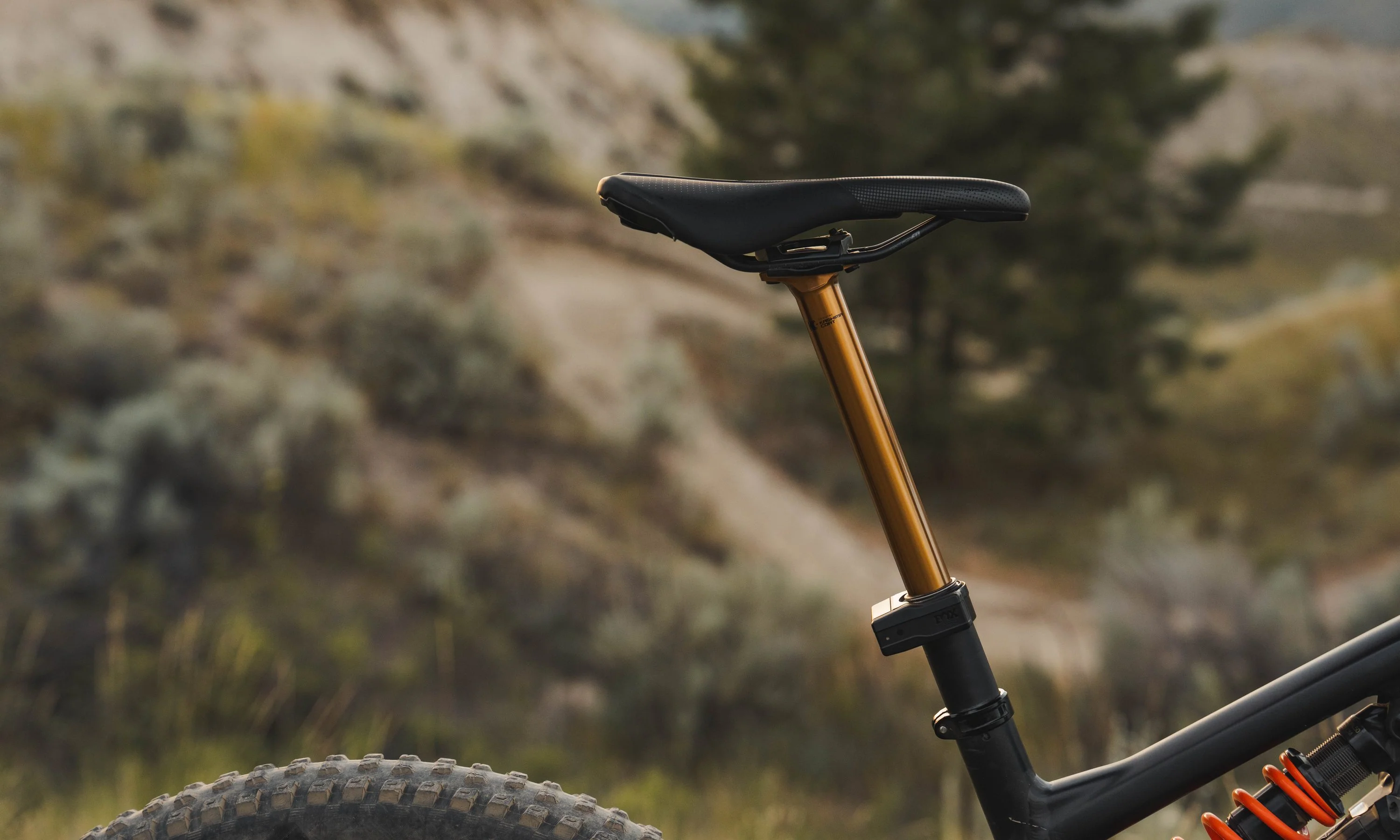Cannondale can never be accused of playing it safe.
It has been an influential player in road and mountain biking for decades in large part because of its radical engineering ethos. Proprietary technology and novel design solutions are the standard in everyday production bikes, not limited to prototype race bikes. Some of its ideas have been odd enough to make even the most tech-savvy riders scratch their heads. Some offended the design sensibilities of stodgy cyclists.
But other technical innovations were ahead of their time, influencing the entire cycling industry.
Some of its current high-tech creations are winning accolades and having a major influence on the future of cycling. The new SuperSix Evo, for example, recently won a Bike of the Year award for 2020.
So how innovative is Cannondale? Let's take a closer look at a few of its key creations over the years and how they stood apart from conventional technology.
[button]Shop Cannondale[/button]
The Lefty fork
 When we talk about out-of-the-box bike ideas, the Lefty fork is perhaps the first thing that comes to mind. In the mountain biking landscape, it’s unique. Riders either love it or hate it.
When we talk about out-of-the-box bike ideas, the Lefty fork is perhaps the first thing that comes to mind. In the mountain biking landscape, it’s unique. Riders either love it or hate it.
Traditional mountain bike forks have two legs, the left side containing the spring (air or coil) and the right side containing the damper, which controls how the spring behaves. The Lefty takes these two components, and combines them together into the left leg, hence the name “Lefty.”
Why do this? First of all, reducing the fork's structure can shed weight, which is important for cross-country applications where the Lefty shines. Second, all forks suffer from some amount of flex and torsional strain. This causes increased stiction and bushing bind which negatively affect comfort and control. The Lefty design actually improves stiffness for shorter travel applications.
 The upside-down design (the stanchion is at the bottom) makes the Lefty thicker and stiffer at the head tube where the most flex occurs. To prevent torsional forces from affecting wheel alignment, the Lefty essentially uses a square stanchion. Instead of bushings, this inner leg rolls on connected sets of needle bearings that help keep it from twisting within the outer leg. Not only does this make the whole fork more resistant to twisting forces, but it helps it stay supple and active during hard braking and cornering.
The upside-down design (the stanchion is at the bottom) makes the Lefty thicker and stiffer at the head tube where the most flex occurs. To prevent torsional forces from affecting wheel alignment, the Lefty essentially uses a square stanchion. Instead of bushings, this inner leg rolls on connected sets of needle bearings that help keep it from twisting within the outer leg. Not only does this make the whole fork more resistant to twisting forces, but it helps it stay supple and active during hard braking and cornering.
[product-block handle="2020-cannondale-scalpel-carbon-2-l-1"/]
The Lefty is the progeny of two other classic Cannondale suspension innovations: the HeadShok and Moto DH.
HeadShok was a suspension system that housed the spring and damper inside an oversized steerer at the lower headtube. (More on that later.)
As riders demanded more travel than the Headshok could offer, the system moved outside of the headtube, leading to the Moto DH fork in 1998, which was essentially two HeadShoks on each side of the fork. This fork was crazy stiff, bombproof, and it was used on the legendary Fulcrum Downhill bike.
Cannondale engineers soon began experimenting with lighter forks for non-downhill applications. They took advantage of the Moto's stiff design and chopped the fork in half. The Lefty was born. When it officially launched, Brian Lopes won the dual slalom at Sea Otter, a testament to its performance.
 Since then, the Lefty has been refined to make it lighter, more effective, and easier to maintain. The latest iteration, the Lefty Ocho, is Cannondale’s ultimate cross-country race fork. It cuts a sleek profile with a single-crown design.
Since then, the Lefty has been refined to make it lighter, more effective, and easier to maintain. The latest iteration, the Lefty Ocho, is Cannondale’s ultimate cross-country race fork. It cuts a sleek profile with a single-crown design.
[newsletter]
CAAD frames
 Cannondale wasn’t the first to make aluminum bicycles. But the CAAD (Cannondale Advanced Aluminum Design) series of frames played a huge role in making aluminum bikes appealing to serious cyclists.
Cannondale wasn’t the first to make aluminum bicycles. But the CAAD (Cannondale Advanced Aluminum Design) series of frames played a huge role in making aluminum bikes appealing to serious cyclists.
The first aluminum bikes from Vitus, Alan, and Guerciotti used the same tube diameters as steel frames. As a result, they traded stiffness for weight savings. The frames were so flexible that handling was severely compromised. Even worse, they weren’t actually that much lighter — only a few ounces, depending on size. For racers or anyone who cared about performance, they were a step backward.
But in the late '80s and early '90s Cannondale (and its competitor, Klein Bikes) began pioneering the use of large-diameter aluminum tubes. Early oversize-diameter frames reduced weight while remaining stiff. Too stiff, in fact. These early bikes gave aluminum a reputation for harsh ride quality. However, this extreme stiffness was appealing for certain styles of racing, such as crits and sprinting.
Cannondale introduced the CAAD series in 1997, with the CAAD3. It was a huge step forward from Cannondale’s earlier 2.8 and 3.0 aluminum frames. CAAD frames used 6061 aluminum, a material that isn’t considered particularly advanced because it requires heat-treating following welding. Heat treating thin-walled tubing without affecting the alignment of the frame wasn't easy, but Cannondale figured it out with experimentation and experience.
Once heat-treated, 6061 produced a much stronger and durable frame. So, Cannondale could use thinner-walled tubing, which improved the ride quality. With later CAAD frames, the tubes are also hydroformed, butted, and in some cases tapered. Before heat treatment, the welds are also "dynafiled" smooth to eliminate stress risers (this only applies to CAAD10 and later models).
[product-block handle="2018-cannondale-caad12-disc-dura-ace-m"/]
In the late '90s, the Italian Saeco team raced aboard an R4000 model Cannondale CAAD3. The world’s fastest sprinter, Mario Cipollini, led the squad and made it famous with his dominant sprint trains and goofy antics. In the 1999 Tour de France, Cipollini managed a historic four consecutive stage wins. After one win, Cipollini famously approached the TV cameras and said, “Cannondale makes the best bikes!” It cemented Cannondale’s reputation among road racers.
I've owned three different CAAD bikes over my cycling career and loved each. I would bet money that most riders if blindfolded, wouldn’t be able to distinguish the ride quality of a CAAD frame from most carbon bikes.
Carbon is now the dominant frame material in cycling. But while the majority of the cycling world relegated aluminum to budget and entry-level bikes, Cannondale stuck to its guns and kept producing high-performance CAAD models. This was appreciated by racers who prioritized value as much as performance.
 In recent years, affordable, high-performance aluminum racing bikes have seen a resurgence in popularity. But CAAD has been there all along, getting better with every generation. The new CAAD13 is the latest in a long line of fast aluminum bikes.
In recent years, affordable, high-performance aluminum racing bikes have seen a resurgence in popularity. But CAAD has been there all along, getting better with every generation. The new CAAD13 is the latest in a long line of fast aluminum bikes.
The Slate gravel bike
 The Slate’s tenure in the Cannondale lineup was relatively short. It was released in 2015 and remained in production until 2019. When it came out, it was far ahead of its time. Since gravel was still a niche category, many questioned this small-wheeled bike. I certainly did.
The Slate’s tenure in the Cannondale lineup was relatively short. It was released in 2015 and remained in production until 2019. When it came out, it was far ahead of its time. Since gravel was still a niche category, many questioned this small-wheeled bike. I certainly did.
But then in 2016, Ted King, a former Cannondale pro rider, won Dirty Kanza, the world's premier gravel race, aboard the Slate, legitimizing it as a real endurance gravel race machine. Allison Tetrick followed this with a win in 2017.
[product-block handle="2019-cannondale-slate-force-1-l"/]
When some of us at the shop finally tried the bike for ourselves, we quickly realized that it wasn’t what we expected based on photos. It was surprisingly fast, nimble, and a huge amount of fun. We took it on rough gravel roads and singletrack trails high up in the Colorado mountains and it seemed like the perfect machine for exploring and being a hooligan.
The aluminum Slate had two unique features that set it apart from any other bike. These features would ultimately change the landscape of gravel cycling. First was the Lefty Oliver suspension fork. At that point, suspension forks on drop bar bikes were uncommon. Cannondale saw an opportunity to use its lightweight Lefty design in a new application.
 The Slate's Lefty Oliver was given a carbon body and a modest 30mm of travel. It kept the weight very low and was just enough to take the edge of rough and bumpy gravel roads. Other brands have now brought gravel-specific suspension forks to market, such as the Lauf Grit, Fox AX, and MRP Baxter forks.
The Slate's Lefty Oliver was given a carbon body and a modest 30mm of travel. It kept the weight very low and was just enough to take the edge of rough and bumpy gravel roads. Other brands have now brought gravel-specific suspension forks to market, such as the Lauf Grit, Fox AX, and MRP Baxter forks.
The second feature of the Slate was the 650b wheels and tires. This piece of tech had the most lasting impact on the gravel scene. This wheel size wasn’t anything new. Radonneuring cyclists had already been experimenting with it for bikepacking and touring. It just wasn’t mainstream yet.
The Slate changed that. Cannondale had Panaracer manufacture 650b tires specifically for the Slate because proper 650b gravel tires didn't exist yet. When Ted King was competitive at the highest level, riders and brands took notice. Now, many gravel bikes offer 650b as an option and several tire manufacturers make 650b gravel tires.
This smaller wheel size found a foothold in gravel because it allows riders to use significantly wider tires. Wider tires improve both traction and comfort on off-road terrain. Cannondale chose 650b on the Slate because it preserved the handling characteristics and acceleration of a traditional 700c road bike. With a large tire, the 650b wheel and tire combo has an overall diameter close to that of a standard 700c wheel and tire.
Now, as the gravel category grows, the definition of a gravel bike remains in constant flux. Before the Slate, many “gravel” bikes like the early Specialized Diverge and GT Grade were nothing more than slightly beefed-up endurance bikes that cleared 35mm cyclocross tires. Salsa, Niner, and some small builders had more cutting-edge models, but it wasn’t until the Slate made headlines that the unlimited potential for gravel bikes became apparent.
Since the Slate's release, gravel race bikes have started moving toward carbon frames and 40mm 700c tires. The Topstone Carbon has taken over as Cannondale’s premier gravel bike. (You'll see why in a bit.) But I will always remember the Slate for its boldness.
Ai offset rear ends
 Photo courtesy Cannondale
Photo courtesy Cannondale
This is a tech innovation that gets very little press. Of course, it’s not as flashy as the Lefty. But in my eyes, it’s one of the most clever and underrated things Cannondale has done.
Ai stands for Asymmetric Integration. Ai offset rear ends are featured on Cannondale's race-oriented off-road bikes like the SuperX cyclocross bike, Scalpel-Si, and F-Si cross-country mountain bikes, and the new Topstone Carbon gravel bike. Cannondale offsets the rear triangle and drivetrain 6mm toward the right (drive side) of the bike.
For most bikes, designing the area around the bottom bracket and rear tire is a struggle between balancing chain stay length, tire clearance, and chainring clearance. Ai offset allows Cannondale to use super short chain stays, which improve handling and responsiveness, without compromising on clearance. There’s ample room to clear mud and to run large tires while still being compatible with large chainrings (or 2x, if you’re into that).
 Photo courtesy Cannondale
Photo courtesy Cannondale
The asymmetrical offset also means the rear wheel can be built stronger and stiffer. Because the rear triangle and drivetrain are offset 6mm to the right side, the rear rim needs to be dished 6mm to the left side to stay centered relative to the frame. This places the rim perfectly between the hub flanges, so a wheel can be built with even spoke tension and spoke bracing angles.
Standard wheels used in a symmetrical frame require the drive side spokes to be tighter to compensate for the space taken up by the cassette. The uneven tension and bracing angles make a wheel more flexy and weaker. Cannondale claims that Ai offset wheels are up to 60% stiffer.
If you have an Ai offset Cannondale, any aftermarket wheels will need to be re-dished to be compatible. Wheels can be run without re-dishing as long as you use a narrow enough tire to maintain adequate clearance. But in my experience, dishing wheels to be compatible with Ai offset is extremely easy with the proper tools. It takes at most 10-15 minutes, and it’s oddly satisfying to see the spoke tension equalize during the process. If you don’t want to do it yourself, it will be an easy task for any bike shop. Some aftermarket wheel manufacturers also offer an Ai offset option from the factory.
With my personal 2019 Cannondale SuperX SE I was happy with the durability of my rear wheel. I’m a heavier guy at 190 pounds, and rear wheels rarely stay straight long when riding off-road. But in over a year of hard riding, the rear wheel of my SuperX didn't need any adjustment. It felt incredibly stiff and precise when railing ruts and berms. It also withstood more than a few hard hits on things like rocks, roots, curbs, and barriers, but it stayed true.
Some may see Ai offset as an inconvenient solution to a relatively small problem. But I'm a believer. Heavy riders who ride hard benefit the most. Superlight wheels weren’t a good option for me until Ai offset. I tested this by using the same lightweight wheels on both my SuperX and a bike with the standard offset and wheel dish. I noticed a lot of wheel flex, especially when standing out of the saddle, and had to swap back to heavier wheels.
Ai offset is simple and elegant, but it pays dividends. With modern wheels going boost and even super-boost plus to improve stiffness and strength, I sometimes wonder why no one thought of it sooner.
The Fulcrum DH bike
 Is the Fulcrum the most complicated and ridiculous downhill race bike ever made? I’d say, yes. The legendary Volvo-Cannondale team was the first time a major corporation had committed a large budget to downhill R&D and competition. The 1998 Fulcrum DH was Cannondale’s attempt to build the most advanced full-suspension mountain bike ever seen.
Is the Fulcrum the most complicated and ridiculous downhill race bike ever made? I’d say, yes. The legendary Volvo-Cannondale team was the first time a major corporation had committed a large budget to downhill R&D and competition. The 1998 Fulcrum DH was Cannondale’s attempt to build the most advanced full-suspension mountain bike ever seen.
The demands of World Cup racing in the ‘90s were different. The tracks were twice as long as today’s shorter, more intense courses. There was significantly more pedaling. Rear shocks were primitive and lacked the platform valving to keep the back end from bobbing when racers put the power down. Engineers had to build pedaling efficiency directly into the suspension kinematics.
The Fulcrum's goal was to develop suspension that would pedal well, but also move easily through its travel. This was complicated by various chainring sizes needed for the wide range of World Cup tracks. Changing the chainring would change the anti-squat, anti-rise, and pedal kickback characteristics of the suspension on a conventional bike, hurting performance.
 Cannondale’s solution was the insanely complex jackshaft drive system. The Fulcrum suspension was optimized for a single chainring size, and gearing was changed using the jackshaft. It used three separate chains, four additional cogs, an army of bolts and bearings, and even an eccentric bottom bracket borrowed from a tandem to separate the chainring providing the chosen gearing from the chainring driving the rear wheel.
Cannondale’s solution was the insanely complex jackshaft drive system. The Fulcrum suspension was optimized for a single chainring size, and gearing was changed using the jackshaft. It used three separate chains, four additional cogs, an army of bolts and bearings, and even an eccentric bottom bracket borrowed from a tandem to separate the chainring providing the chosen gearing from the chainring driving the rear wheel.
The Fulcrum's rear end provided roughly 6" of travel, and the axle path was designed to move rearward toward the end of the stroke. It does so with the help of two, short, rotating links, a feature we now see on many modern suspension designs like DW-Link and VPP.
 At the front was the HeadShok-based, dual-crown Moto DH fork — the granddaddy of the Lefty fork. The oversized front-end also had interchangeable cups that could adjust the head angle, an advanced feature that wouldn’t be common until 10 years later when Cane Creek introduced its AngleSet.
At the front was the HeadShok-based, dual-crown Moto DH fork — the granddaddy of the Lefty fork. The oversized front-end also had interchangeable cups that could adjust the head angle, an advanced feature that wouldn’t be common until 10 years later when Cane Creek introduced its AngleSet.
Ultimately, the Fulcrum DH was too expensive. It was estimated that each one cost $20,000-30,000 to make. The Fulcrum DH had the potential to be further refined, but unfortunately, the program was canceled after just two years. It did prove, however, the extreme measures Cannondale took to achieve its design goals. The Fulcrum's spirit of innovation has been carried on into the bikes that Cannondale produces today.
[button]Shop Cannondale[/button]
Honorable mentions
Cannondale produces so much new and amazing bike tech that I just can't write about all of it. Here are five more honorable mentions.
Kingpin Suspension
 The new Topstone Carbon has taken over as Cannondale’s premier gravel bike. The party piece is the new rear end that uses Cannondale’s Kingpin suspension. Instead of a shock and linkage, it uses a thru-axle pivot on the seat tube that allows the entire back of the frame to flex up to 30mm, like a series of connected leaf springs. It improves comfort and traction without adding weight. Time will tell if it’s the next big thing in gravel.
The new Topstone Carbon has taken over as Cannondale’s premier gravel bike. The party piece is the new rear end that uses Cannondale’s Kingpin suspension. Instead of a shock and linkage, it uses a thru-axle pivot on the seat tube that allows the entire back of the frame to flex up to 30mm, like a series of connected leaf springs. It improves comfort and traction without adding weight. Time will tell if it’s the next big thing in gravel.
[product-block handle="2021-cannondale-topstone-carbon-lefty-1-s"/]
HeadShok

Weird? Yes. Effective? Sure. HeadShok was divisive in terms of looks. But it showed Cannondale’s willingness to break the “rules” of bike design to build something better. HeadShok allowed Cannondale to make a stiffer front end, something bikes with suspension forks severely lacked in the early '90s. HeadShok hasn’t been in vogue for a very long time, but its legacy lives on in its progeny — the Lefty fork.
The Jekyll Dyad and Gemini shocks
 Cannondale Jekyll with Gemini shock
Cannondale Jekyll with Gemini shock
The big problem with enduro bikes has always been that they sacrifice efficiency for suspension travel. Shock valving and suspension kinematics address this to some degree, but Cannondale decided to take it a step further with its Jekyll enduro bikes. The Dyad pull-shock (which is weird and crazy enough to warrant it’s own story) and Gemini shock have two modes that can be switched using a bar-mounted lever. A long travel mode for crushing descents, and a short travel mode for climbing, pedaling, and pumping through rolling terrain.
The 2019 World Cup DH bike
This was a short-lived experiment, but it had the internet talking for the whole 2019 World Cup season. Cannondale tried returning the downhill racing with a bike that separated the shock spring from the damper (the second damper body is hidden in the downtube). This supposedly allowed much finer control of the damping characteristics throughout the compression and rebound strokes. Tuning seemed like a complete mind-melter, but the end result could have been game-changing. Unfortunately, the project has been shelved, and we’ll never see if the bike could have reached the podium.
Hollowgram Si cranks

I’ve long considered these to be some of the coolest cranks ever made. Not only do they look good, but they are light, stiff, and modular with one-piece direct mount chainrings. They were innovative, and many of these same features are now present on most cranks by other brands. To me, the Hollowgrams still look the best. I’ve gone so far as to put them on non-Cannondale bikes.
Are you a Cannondale fan? Did I miss your favorite innovation? What’s the best (or worst) piece of Cannondale tech in your opinion? Let us know in the comments!

























